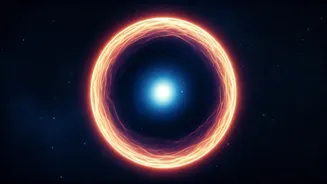Solar Eruptions Explained
Solar eruptions, which are also known as solar flares and coronal mass ejections, are among the most powerful events in our solar system. They originate
from the Sun and involve the sudden release of a massive amount of energy. When these events occur, they spew out bursts of radiation, charged particles, and magnetic fields into space. The intensity of these eruptions can vary greatly, with some being minor and others being large enough to disrupt technologies on Earth. The solar flares are classified based on their brightness in X-rays, with the categories being A, B, C, M, and X (the strongest). Coronal mass ejections involve a significant release of plasma and magnetic field from the Sun's corona, and they can travel through space at extremely high speeds. Understanding solar eruptions is important, as these events can affect Earth's environment and technology.
Geomagnetic Activity Unveiled
Geomagnetic activity refers to the disturbances in Earth's magnetic field caused by the interaction with the solar wind. When solar eruptions release charged particles, these particles stream towards Earth. Upon reaching our planet, they interact with Earth's magnetosphere. This interaction causes fluctuations in Earth's magnetic field, resulting in geomagnetic storms and other activities. The strength of these geomagnetic events is measured using the Kp index, which ranges from 0 to 9, with higher numbers indicating more intense activity. Intense geomagnetic storms can cause a range of effects. They can interfere with satellite operations, radio communications, and even power grids. These storms can also create beautiful auroras, known as the Northern and Southern Lights. Monitoring and predicting geomagnetic activity are important for mitigating potential risks and understanding space weather's effects on Earth.
Auroras: Celestial Spectacle
Auroras are a stunning display of light, commonly seen in the sky near the polar regions of Earth, caused by charged particles interacting with the atmosphere. These particles are emitted by the Sun and are guided toward the Earth by the solar wind. When these charged particles collide with gases in Earth's atmosphere, such as oxygen and nitrogen, they create light. This light appears in various colors, with green being the most common (caused by oxygen) and red and blue also being frequently observed. The intensity and visibility of auroras depend on factors like the level of solar activity and the strength of geomagnetic disturbances. Auroras are not just a beautiful sight; they are a direct indication of the interactions between the Sun and the Earth's atmosphere. They remind us of the powerful forces at work in space and of the need to understand how they affect our planet.
Impacts on Earth
Solar eruptions and the resulting geomagnetic activity have several potential impacts on Earth. One notable effect is the disruption of satellite communications. Geomagnetic storms can interfere with the signals that satellites send and receive, impacting services like GPS and satellite television. Another area of concern is the potential for disruptions to power grids. Intense geomagnetic storms can induce currents in power lines, potentially causing blackouts. Additionally, these events can affect radio communications, especially at high frequencies, making it harder for people to communicate. The scientific community has been actively studying these impacts, developing ways to mitigate the risks. This involves forecasting geomagnetic storms and taking proactive measures to protect critical infrastructure. By understanding the risks and preparing for these events, we can minimize their impact on our lives.












